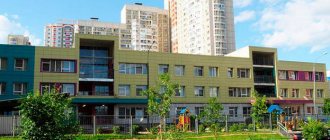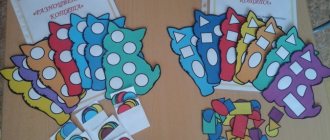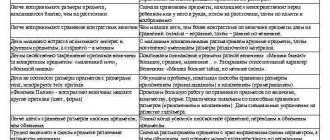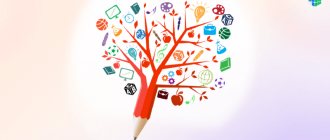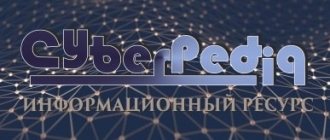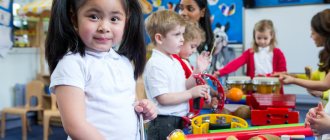Innovation as a means of developing Russian schools
What are educational technologies? The classification (table according to the Federal State Educational Standard) is practically no different from the classical system; it presents the same innovative methods used by teachers at different levels of schoolchildren’s education. The class-lesson system of classes involves teachers using certain programs in the subject, therefore the classification of pedagogical teaching technologies is carried out taking into account the individual characteristics of each specific academic discipline.
Problem-based learning
This technique is based on a heuristic (problematic) approach. Students acquire skills and abilities in the process of independent activity, as a result of which their creative and cognitive abilities develop.
The use of advanced education in the modern educational system is permitted by the second generation Federal State Educational Standard. Children learn to solve problems in different ways, applying specific knowledge depending on the specifics of the current situation. With this approach, each child gets the opportunity to independently determine ways to solve problems.
Preschooler portfolio technology
A portfolio is a collection of a child’s personal achievements in various activities, his successes, positive emotions, an opportunity to once again relive the pleasant moments of his life, this is a unique route for the child’s development.
There are a number of portfolio functions:
diagnostic (records changes and growth over a certain period of time),
· meaningful (reveals the entire range of work performed),
· rating (shows the range of skills of the child), etc.
The process of creating a portfolio is a kind of pedagogical technology. There are a lot of portfolio options. The content of the sections is filled out gradually, in accordance with the capabilities and achievements of the preschooler. I. Rudenko
Section 1 "Let's get to know each other." The section contains a photograph of the child, indicating his last and first name, group number; you can enter the heading “I love...” (“I like...”, “I love it when...”), in which the child’s answers will be recorded.
Section 2 “I’m growing!” The section includes anthropometric data (in artistic and graphic design): “That’s what I am!”, “How I’m growing,” “I’ve grown up,” “I’m big.”
Section 3 “Portrait of my child.” This section contains essays by parents about their baby.
Section 4 “I dream...”. The section records the child’s own statements when asked to continue the phrases: “I dream of...”, “I would like to be...”, “I’m waiting for...”, “I see myself...”, “I want to see myself...”, “ My favorite things..."; answers to the questions: “Who and what will I be like when I grow up?”, “What do I like to think about?”
Section 5 “This is what I can do.” The section contains samples of the child’s creativity (drawings, stories, homemade books).
Section 6 “My achievements”. The section records certificates and diplomas (from various organizations: kindergarten, media holding competitions).
Section 7 “Advise me...”. The section provides recommendations to parents by the teacher and all specialists working with the child.
Section 8 “Ask, parents!” In this section, parents formulate their questions to preschool specialists.
L. Orlova offers this version of a portfolio, the content of which will primarily be of interest to parents; the portfolio can be filled out both in kindergarten and at home and can be presented as a mini-presentation at a child’s birthday party. The author proposes the following portfolio structure. The title page, which contains information about the child (last name, first name, patronymic, date of birth), records the start and end date of maintaining the portfolio, an image of the child’s palm at the start of maintaining the portfolio, and an image of the palm at the end of maintaining the portfolio.
Section 1 “Get to know me” contains the inserts “Admire me”, where portraits of the child taken in different years on his birthdays are sequentially pasted, and “About me”, which contains information about the time and place of birth of the child, about the meaning of the child’s name , about the date of his name day celebration, a short story from the parents, why this name was chosen, where the surname came from, information about famous namesakes and famous namesakes, personal information of the child (zodiac sign, horoscopes, talismans, etc.).
Section 2 “I’m growing” includes inserts “Growth Dynamics”, which provides information about the child’s growth from the first year of life, and “My achievements for the year”, which indicates how many centimeters the child has grown, what he has learned over the past year, for example, counting until five, somersault, etc.
Section 3 “My Family”. The content of this section includes short stories about family members (in addition to personal data, you can mention profession, character traits, favorite activities, features of spending time with family members).
Section 4 “I’ll help you in any way I can” contains photographs of the child in which he is depicted doing his homework.
Section 5 “The world around us.” This section includes small creative works of the child on excursions and educational walks.
Section 6 “Winter (spring, summer, autumn) inspiration.” The section contains children's works (drawings, fairy tales, poems, photographs from matinees, recordings of poems that the child recited at the matinee, etc.)
V. Dmitrieva, E. Egorova also propose a certain portfolio structure:
Section 1 “Parents’ information”, which contains the “Let’s get to know each other” section, which includes information about the child, his achievements, which were noted by the parents themselves.
Section 2 “Information from teachers” contains information about teachers’ observations of the child during his stay in kindergarten in four key areas: social contacts, communicative activities, independent use of various sources of information and activity as such.
Section 3, “The child’s information about himself,” contains information received from the child himself (drawings, games that the child himself came up with, stories about himself, about friends, awards, diplomas, certificates).
L. I. Adamenko offers the following portfolio structure:
block, “Which child is good,” which contains information about the child’s personal qualities and includes: an essay by the parents about the child; teachers' thoughts about the child; the child’s answers to questions during the informal conversation “Tell me about yourself”; responses from friends and other children to a request to tell about the child; child’s self-esteem (results of the “Ladder” test); psychological and pedagogical characteristics of the child; “basket of wishes”, the contents of which include gratitude to the child - for kindness, generosity, good deed; letters of gratitude to parents - for raising a child;
the “Which child is skillful” block contains information about what the child can do, what he knows, and includes: parents’ answers to questionnaire questions; feedback from teachers about the child; children's stories about the child; stories from teachers to whom the child goes to clubs and sections; assessment of a child’s participation in actions; the psychologist's characteristics of the child's cognitive interests; diplomas in nominations - for curiosity, skills, initiative, independence;
The “Which child is successful” block contains information about the child’s creative abilities and includes: parental feedback about the child; a child’s story about his successes; creative works (drawings, poems, projects); diplomas; illustrations of success, etc.
Thus, a portfolio (a folder of a child’s personal achievements) allows for an individual approach to each child and is presented upon graduation from kindergarten as a gift to the child himself and his family.
Technology "Teacher's Portfolio"
Modern education needs a new type of teacher:
creative thinkers
· proficient in modern educational technologies,
· methods of psychological and pedagogical diagnostics,
· ways of independently constructing the pedagogical process in the conditions of specific practical activities,
· ability to predict your final result.
Every teacher should have a record of success, which reflects everything joyful, interesting and worthy that happens in the life of a teacher. A teacher’s portfolio can become such a dossier.
A portfolio allows you to take into account the results achieved by a teacher in various types of activities (educational, educational, creative, social, communicative), and is an alternative form of assessing the professionalism and performance of a teacher.
To create a comprehensive portfolio, it is advisable to introduce the following sections:
Section 1 “General information about the teacher”
· This section allows you to judge the process of individual personal development of the teacher (last name, first name, patronymic, year of birth);
· education (what and when you graduated from, the specialty you received and your diploma qualifications);
· labor and teaching experience, work experience in a given educational institution;
· advanced training (name of the structure where the courses were taken, year, month, course topics);
· copies of documents confirming the availability of academic and honorary titles and degrees;
· the most significant government awards, diplomas, letters of gratitude;
· Diplomas of various competitions;
· other documents at the discretion of the teacher.
Section 2 “Results of teaching activities.”
The content of this section forms an idea of the dynamics of the results of a teacher’s activities over a certain period. The section may include:
· materials with the results of children’s mastery of the implemented program;
· materials characterizing the level of development of children’s ideas and skills, the level of development of personal qualities;
· comparative analysis of a teacher’s activities over three years based on the results of pedagogical diagnostics, the results of students’ participation in various competitions and olympiads;
· analysis of the learning results of students in the first grade, etc.
Section 3 “Scientific and methodological activities”
The content of this section contains materials that indicate the professionalism of the teacher. It can be:
· materials that describe the technologies used by the teacher in activities with children and justify their choice;
· materials characterizing work in a methodological association, creative group;
· materials confirming participation in professional and creative pedagogical competitions;
· in weeks of teaching;
· conducting seminars, round tables, master classes;
· original programs, methodological developments;
· creative reports, abstracts, reports, articles and other documents.
Section 4 “Subject development environment”
Contains information about the organization of a subject-development environment in groups and classrooms:
· plans for organizing a subject-development environment;
· sketches, photographs, etc.
Section 5 “Working with parents”
Contains information about working with parents of students (work plans; event scenarios, etc.).
Thus, the portfolio will allow the teacher himself to analyze and present significant professional results and achievements, and will ensure monitoring of his professional growth.
